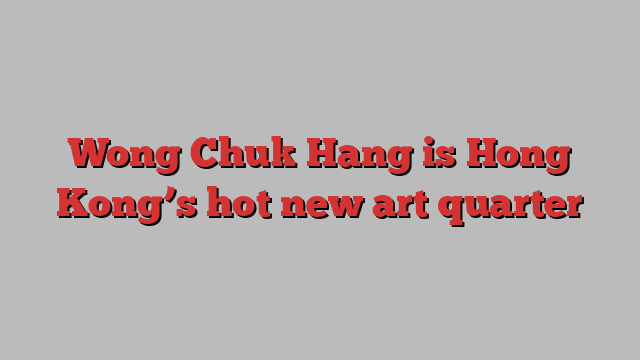
Unlock the Editor’s Digest for free
Roula Khalaf, Editor of the FT, selects her favourite stories in this weekly newsletter.
Hong Kong has always attracted entrepreneurs, but its hyper-expensive property market has rarely been hospitable to those running scrappy young galleries. Since the 2019 street protests, and with the pandemic and heavy-handed government restrictions weighing on its economy, Hong Kong’s commercial real estate market has fallen and a crop of young Chinese curators and dealers have been taking advantage.
Many have gravitated to Wong Chuk Hang, which was the industrial centre of Hong Kong island from the 1950s until Deng Xiaoping’s economic reforms, starting in 1978, kicked in. The area is dominated by drab, multistorey warehouses built in the 1960s and ’70s, unpretentious and grimy. Although some adventurous artists and galleries moved there as early as 2010, only since the arrival of the MTR subway in 2017 has it gained traction as a neighbourhood for art. Average monthly rent for a 2,500 sq ft space in a factory building there is HK$35,000 (US$4,500), according to local property listings, while for a similar size space in H Queens, where a few mega-galleries operate, rent and management fees are roughly HK$200,000.
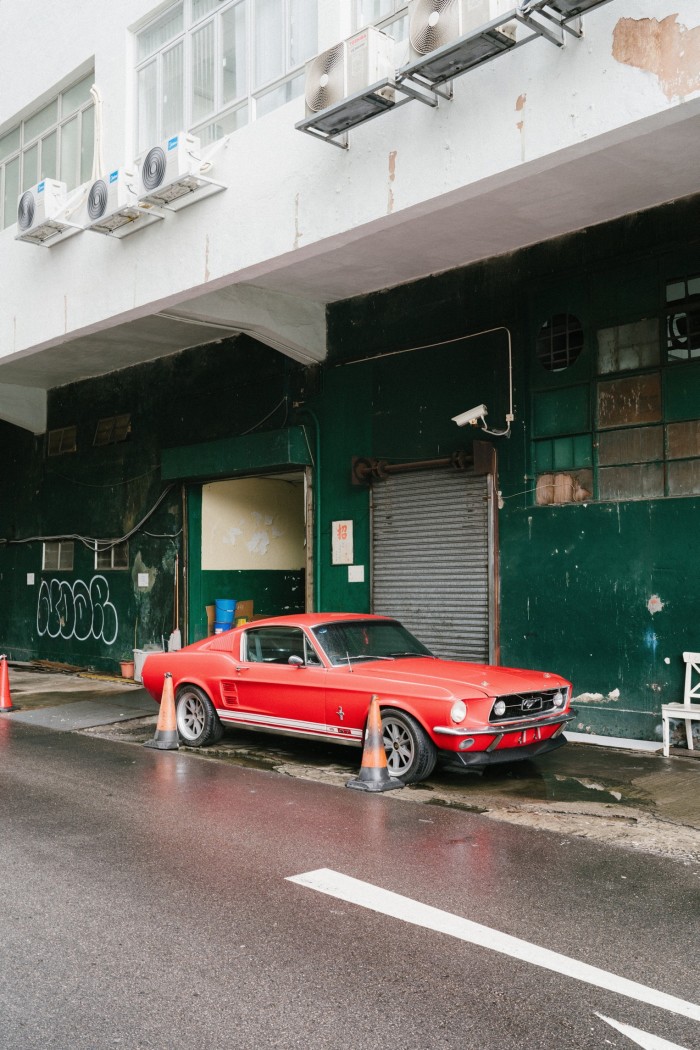
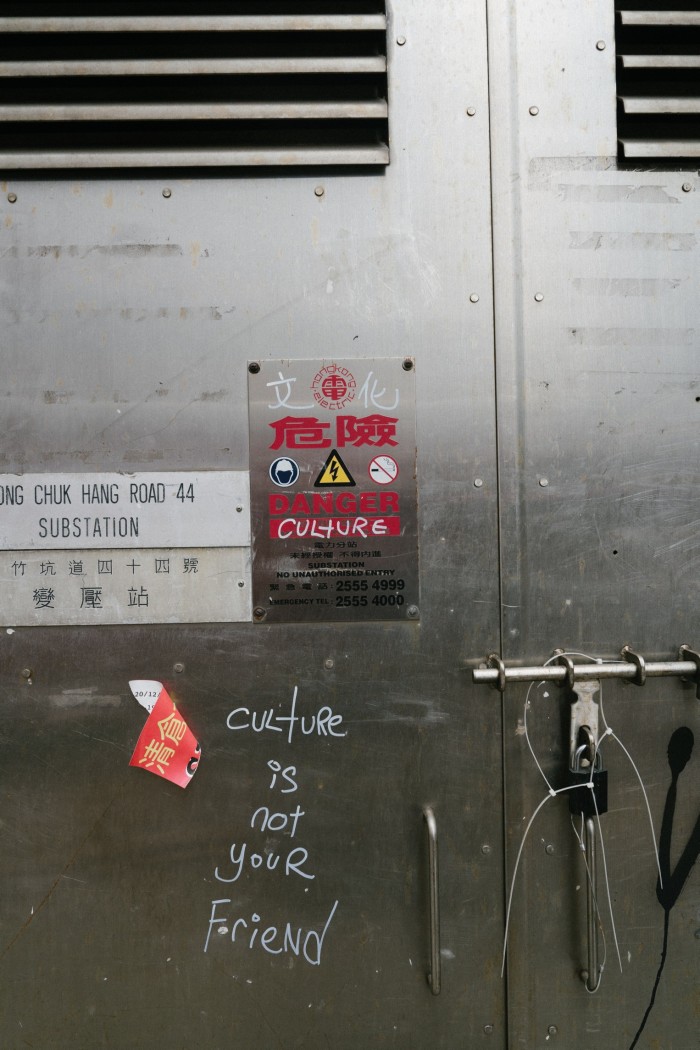
Emerald Mou, 35, opened her gallery there, Mou Projects, in September 2021. Trained as an accountant, she worked at Lehmann Maupin’s Hong Kong gallery for a year and in 2019 became co-partner in Mine Project, which focused on Chinese and international artists. After its lease expired, Mou, who is from Qingdao on the mainland, went solo.
“Although centrally located, Mine Project was in a dull office tower, with little else to visit nearby,” says Mou. “I needed to move to an area with other galleries.” She signed a lease for a 4,000 sq ft white-cube space that allows her to continue “building a gallery programme around artists of my generation”. For instance, she shows Tap Chan, a conceptual artist in her early forties known for her playful “post-reality” sculptures that mislead the senses. Two other galleries occupy the same building, including London dealer Ben Brown Fine Art, which moved from Central during Covid.
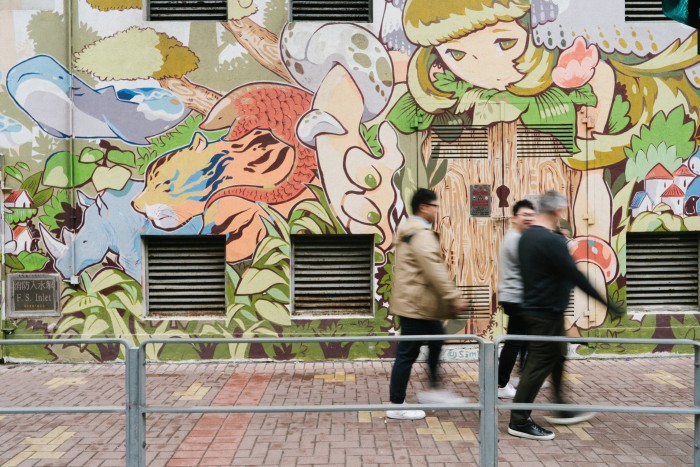
Around the corner in another old factory building is Current Plans, founded by Eunice Tsang. She too found her way to Wong Chuk Hang via a succession of small spaces.
After graduating from London’s Slade School of Fine Art in 2014, Tsang, now 32, returned to Hong Kong for a four-year stint as assistant curator at Tai Kwun, an exhibition space funded by the wealthy Hong Kong Jockey Club. Tsang loved London’s grungy artist pop-ups. “My London friends did shows in spaces [such as] an abandoned kindergarten, a farm, tiny toilet stalls,” says Tsang. So a collaboration with Present Projects, an experimental 900 sq ft space initiated by fashion photographer and filmmaker Wing Shya in a crumbling tong lau (a traditional tenement) in a working-class area of Kowloon, seemed perfect.
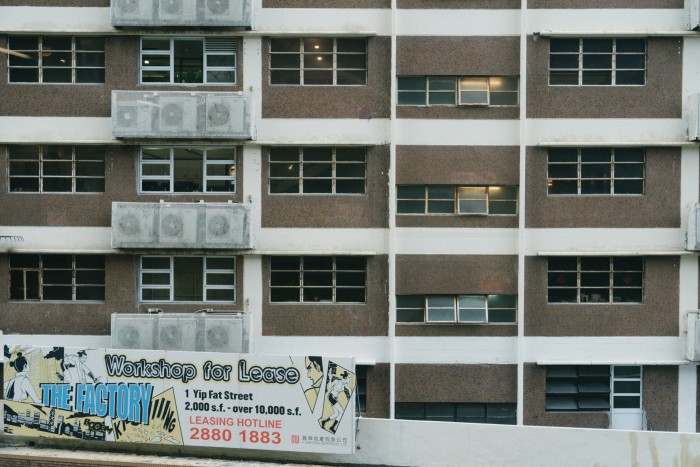
For two years she organised shows with young artists, musicians, video-game designers and illustrators, before splitting amicably from Present Projects in 2021. She briefly ran her own space there, called Current Plans, which she moved to Wong Chuk Hang in January 2024, courtesy of art patron Mimi Brown, who offered her a 14,500 sq ft space for free for a year. She launched with a show featuring paintings and sculptures by Hong Kong tattoo artist Yau Kwok Keung.
To coincide with Art Basel Hong Kong, Charlotte Lin and Cusson Cheng, both under 30, will officially open their new gallery, Podium. The pair met in October 2020, then Lin worked for two years at Tang, a high-profile Beijing gallery, while Cheng joined non-profit Para Site Art Space. In early 2023, Lin asked Cheng to collaborate on a gallery. “Some Hong Kong galleries are purely commercial wet paintings,” says Lin. “And some are too experimental. We asked ourselves why not be both? The work must be aesthetic, have scholarly complexity and be viable commercially. That’s our holy trinity.”
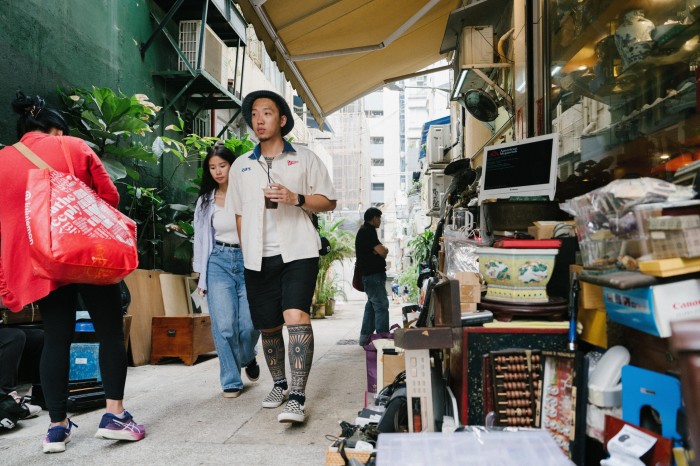
After searching for a gallery space in Sheung Wan, an instagrammable neighbourhood overrun with small cafés and antique shops within walking distance of Central, they decided on Wong Chuk Hang, where they were fascinated by vintage sage-coloured terrazzo flooring they found in a former factory unit. The terrazzo, Cheng says, emerged in Hong Kong in the 1950s, installed by craftsmen from Shanghai, Guangzhou and south-east Asia. “It symbolises Hong Kong’s openness to diverse cultural influences.”
Following the introduction of the National Security Law in 2020, which has had a broad chilling effect on protest and anything that might be deemed subversive, and Covid restrictions, many residents, especially millennials and Gen Zs, emigrated, including more than 120,000 to the UK through its Hong Kong UK Welcome Programme. “Since 2020, I can’t count how many times I saw people off at the airport,” Cheng says. When family and friends heard about Lin and Cheng’s plans to open a gallery for under-represented artists, particularly women and LGBT+ creatives, they commented on their bravery. And Cheng remains optimistic: “I was born and raised here, and this may sound romantic, but I feel I can make Hong Kong a more beautiful place.”

